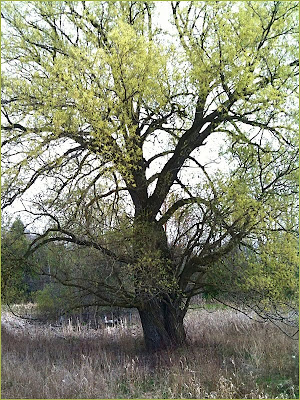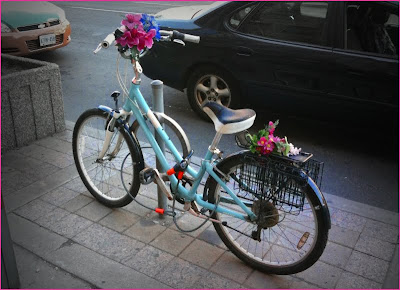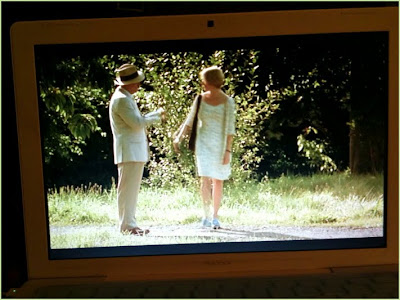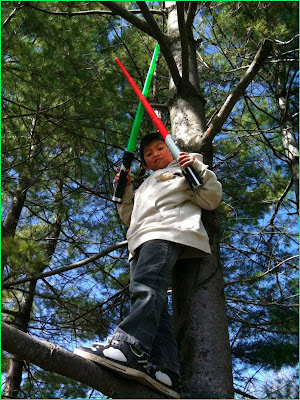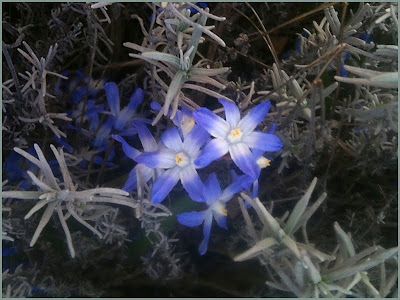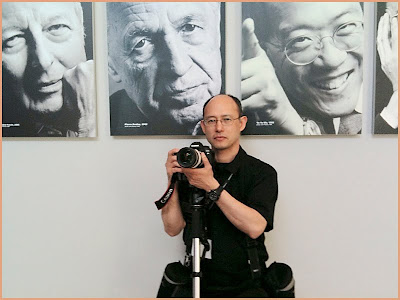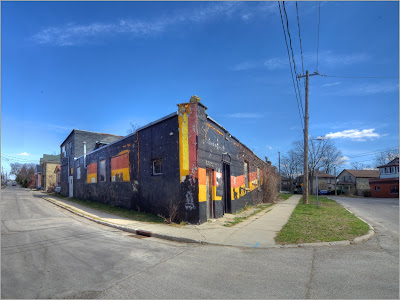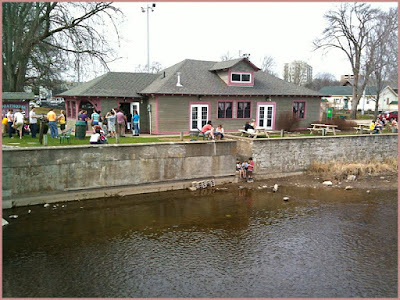
Ideas, Comments, Exaggerations & Delusions, Inspirations, and Secrets. Shoot what it feels like, not what it looks like. Seeing my world through Sony gear, finding Heaven everywhere. Check out my website/links below.
Tuesday, April 27, 2010
Monday, April 26, 2010
Sunday, April 25, 2010
Life in moist, dark places

Pared down to its barest essence, wabi-sabi is the Japanese art of finding beauty in imperfection and profundity in nature, of accepting the natural cycle of growth, decay, and death. It's simple, slow, and uncluttered-and it reveres authenticity above all. Wabi-sabi is flea markets, not warehouse stores; aged wood, not Pergo; rice paper, not glass. It celebrates cracks and crevices and all the other marks that time, weather, and loving use leave behind. It reminds us that we are all but transient beings on this planet-that our bodies as well as the material world around us are in the process of returning to the dust from which we came. Through wabi-sabi, we learn to embrace liver spots, rust, and frayed edges, and the march of time they represent.
Wabi-sabi is underplayed and modest, the kind of quiet, undeclared beauty that waits patiently to be discovered. It's a fragmentary glimpse: the branch representing the entire tree, shoji screens filtering the sun, the moon 90 percent obscured behind a ribbon of cloud. It's a richly mellow beauty that's striking but not obvious, that you can imagine having around you for a long, long time-Katherine Hepburn versus Marilyn Monroe. For the Japanese, it's the difference between kirei-merely "pretty"-and omoshiroi, the interestingness that kicks something into the realm of beautiful. (Omoshiroi literally means "white faced," but its meanings range from fascinating to fantastic.) It's the peace found in a moss garden, the musty smell of geraniums, the astringent taste of powdered green tea. My favorite Japanese phrase for describing wabi-sabi is "natsukashii furusato," or an old memory of my hometown. (This is a prevalent mind-set in Japan these days, as people born in major urban areas such as Tokyo and Osaka wax nostalgic over grandparents' country houses that perhaps never were. They can even "rent" grandparents who live in prototypical country houses and spend the weekend there.)
Daisetz T. Suzuki, who was one of Japan's foremost English-speaking authorities on Zen Buddhism and one of the first scholars to interpret Japanese culture for Westerners, described wabi-sabi as "an active aesthetical appreciation of poverty." He was referring to poverty not as we in the West interpret (and fear) it but in the more romantic sense of removing the huge weight of material concerns from our lives. "Wabi is to be satisfied with a little hut, a room of two or three tatami mats, like the log cabin of Thoreau," he wrote, "and with a dish of vegetables picked in the neighboring fields, and perhaps to be listening to the pattering of a gentle spring rainfall."
In Japan, there is a marked difference between a Thoreau-like wabibito (wabi person), who is free in his heart, and a makoto no hinjin, a more Dickensian character whose poor circumstances make him desperate and pitiful. The ability to make do with less is revered; I heard someone refer to a wabibito as a person who could make something complete out of eight parts when most of us would use ten. For us in the West, this might mean choosing a smaller house or a smaller car, or-just as a means of getting started-refusing to supersize our fries.
The words wabi and sabi were not always linked, although they've been together for such a long time that many people (including D. T. Suzuki) use them interchangeably. One tea teacher I talked with begged me not to use the phrase wabi-sabi because she believes the marriage dilutes their separate identities; a tea master in Kyoto laughed and said they're thrown together because it sounds catchy, kind of like Ping-Pong. In fact, the two words do have distinct meanings, although most people don't fully agree on what they might be.
Wabi stems from the root wa, which refers to harmony, peace, tranquillity, and balance. Generally speaking, wabi had the original meaning of sad, desolate, and lonely, but poetically it has come to mean simple, unmaterialistic, humble by choice, and in tune with nature. Someone who is perfectly herself and never craves to be anything else would be described as wabi. Sixteenth-century tea master Jo-o described a wabi tea man as someone who feels no dissatisfaction even though he owns no Chinese utensils with which to conduct tea. A common phrase used in conjunction with wabi is "the joy of the little monk in his wind-torn robe." A wabi person epitomizes Zen, which is to say, he or she is content with very little; free from greed, indolence, and anger; and understands the wisdom of rocks and grasshoppers.
Until the fourteenth century, when Japanese society came to admire monks and hermits for their spiritual asceticism, wabi was a pejorative term used to describe cheerless, miserable outcasts. Even today, undertones of desolation and abandonment cling to the word, sometimes used to describe the helpless feeling you have when waiting for your lover. It also carries a hint of dissatisfaction in its underhanded criticism of gaud and ostentation-the defining mark of the ruling classes when wabisuki (a taste for all things wabi) exploded in the sixteenth century. In a country ruled by warlords who were expected to be conspicuous consumers, wabi became known as "the aesthetic of the people"-the lifestyle of the everday samurai, who had little in the way of material comforts.
Sabi by itself means "the bloom of time." It connotes natural progression-tarnish, hoariness, rust-the extinguished gloss of that which once sparkled. It's the understanding that beauty is fleeting. The word's meaning has changed over time, from its ancient definition, "to be desolate," to the more neutral "to grow old." By the thirteenth century, sabi's meaning had evolved into taking pleasure in things that were old and faded. A proverb emerged: "Time is kind to things, but unkind to man."
Sabi things carry the burden of their years with dignity and grace: the chilly mottled surface of an oxidized silver bowl, the yielding gray of weathered wood, the elegant withering of a bereft autumn bough. An old car left in a field to rust, as it transforms from an eyesore into a part of the landscape, could be considered America's contribution to the evolution of sabi. An abandoned barn, as it collapses in on itself, holds this mystique.
There's an aching poetry in things that carry this patina, and it transcends the Japanese. We Americans are ineffably drawn to old European towns with their crooked cobblestone streets and chipping plaster, to places battle scarred with history much deeper than our own. We seek sabi in antiques and even try to manufacture it in distressed furnishings. True sabi cannot be acquired, however. It is a gift of time.
So now we have wabi, which is humble and simple, and sabi, which is rusty and weathered. And we've thrown these terms together into a phrase that rolls off the tongue like Ping-Pong. Does that mean, then, that the wabi-sabi house is full of things that are humble, plain, rusty, and weathered? That's the easy answer. The amalgamation of wabi and sabi in practice, however, takes on much more depth.
In home decor, wabi-sabi inspires a minimalism that celebrates the human rather than the machine. Possessions are pared down, and pared down again, until only those that are necessary for their utility or beauty (and ideally both) are left. What makes the cut? Items that you both admire and love to use, like those hand-crank eggbeaters that still work just fine. Things that resonate with the spirit of their makers' hands and hearts: the chair your grandfather made, your six-year-old's lumpy pottery, an afghan you knitted yourself (out of handspun sheep's wool, perhaps). Pieces of your own history: sepia-toned ancestral photos, baby shoes, the Nancy Drew mysteries you read over and over again as a kid.
Wabi-sabi interiors tend to be muted, dimly lit, and shadowy-giving the rooms an enveloping, womblike feeling. Natural materials that are vulnerable to weathering, warping, shrinking, cracking, and peeling lend an air of perishability. The palette is drawn from browns, blacks, grays, earthy greens, and rusts. This implies a lack of freedom but actually affords an opportunity for innovation and creativity. In Japan, kimonos come in a hundred different shades of gray. You simply have to hone your vision
so you can see, and feel, them all.
_Tadao Ando
Saturday, April 24, 2010
iPhone Diaries #86: "Kortright Road West #2"
iPhone Diaries #85: "Kortright Road West #1"
Friday, April 23, 2010
iPhone Diaries #83: "Pull-through heaven"

Wednesday, April 21, 2010
iPhone Diaries #79: "Rogue blue"
iPhone Diaries - a description
iPhone Diaries #77: "Photoshoot at the Glenn Gould Studios, CBC, Toronto""
Monday, April 12, 2010
The Speed River 11apr2010
Sunday, April 4, 2010
"The Ward"
An Inukshuk on the Speed River at Gordon
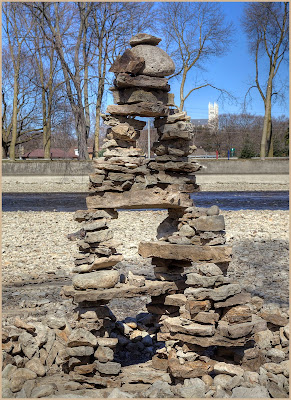
Saturday, April 3, 2010
Friday, April 2, 2010
iPhone Diaries #74: "First line-up for ice-cream"
iPhone Diaries #73: "First crocus for 2010"

POPULAR POSTS
-
Well, it's not really. The signage is changed on a regular basis by the owner of this establishment who fixes washers and dryers. T...
-
Kamal and Lamis' wedding on June 30th, in London, ON. This is the first wedding in years that I have attended as a guest. Througho...
-
a65 (a77 would be too big for this setup), HVLF43AM Flash (the 58AM would be too big for this setup), ThinkTank's CB Junior bracke...
-
I came across this blog by a collection of inveterate aficionados of broken umbrellas. They also welcome submissions from the umbrellarazzi...
-
It's been an intense relationship and it will soon be over. It's not the Oly, (here's goes the proverbial...) it's me. A mon...
-
http://bostonreview.net/BR36.3/junot_diaz_apocalypse_haiti_earthquake.php Pulitzer Prize winner Junot Diaz, in the May-June 2011 Boston Revi...
-
by Mary, of non-Filipina heritage, using a cookbook recipe for adobo . March 23rd. Recipe by www.pepper.ph . In addition to the recipe,...
-
There has never been a free lunch with high ISO's. Using high ISOs (ISO1600 and higher) meant putting up with noise/grain, colour shift...


